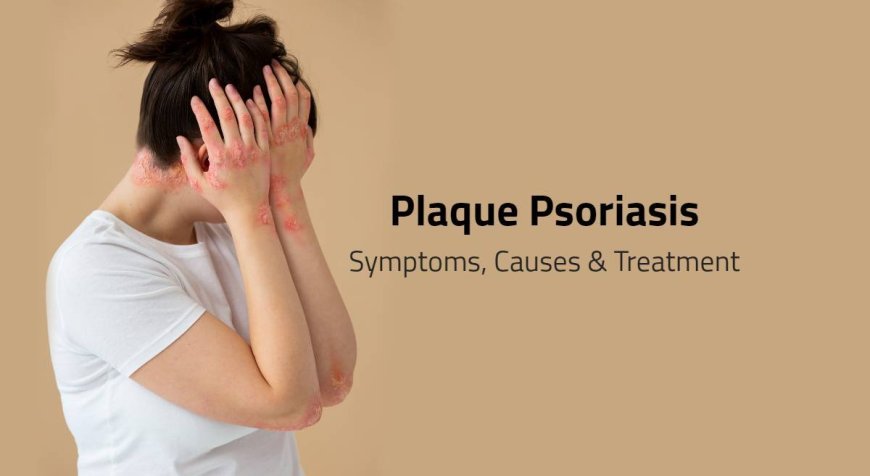Plaque Psoriasis
Plaque psoriasis is a type of chronic autoimmune skin disorder that is estimated to affect 3–4 percent of the global population.

Plaque psoriasis is a type of chronic autoimmune skin disorder that is estimated to affect 3–4 percent of the global population.
This condition can cause patches of thick, red skin to develop on the body and is characterized by areas of dry, scaly, silver-colored patches of skin. Plaque psoriasis is commonly seen on the scalp, elbows, knees, torso, and other body areas. It can be extremely uncomfortable and cause itching, redness, soreness, and even bleeding in some cases.
In this article, we’ll explore the various causes, symptoms, and treatments of plaque psoriasis as well as discuss how it differs from other skin conditions and explain things to watch out for. Read on to learn more about plaque psoriasis and how to manage it.
What is Plaque Psoriasis?
Plaque psoriasis is a type of chronic skin condition that is estimated to affect 3–4 percent of the world's population. This disorder is characterized by red, scaly, and inflamed skin that forms thick, silver-colored patches often seen on the scalp, elbows, knees, lower back, or other body parts. It can be mild to severe, causing itching, redness, soreness, and even bleeding.
Plaque psoriasis is an autoimmune disorder and is the most common form of psoriasis. The condition occurs when a person’s body produces an excess amount of skin cells that then buildup and form thick patches. These skin cells are a type of protein called keratinocytes.
Causes of Plaque Psoriasis
The exact cause of plaque psoriasis is still unknown, however, researchers believe that a combination of environmental and genetic factors may be the cause. These may include:
• Exposure to environmental triggers such as smoking, stress, infections, and skin injury • Family history of psoriasis • Obesity • Hormonal changes • Immune system dysfunction
It’s important to note that while plaque psoriasis is not contagious, it’s possible for the condition to be passed down from one generation to the next.
Symptoms of Plaque Psoriasis
The most common symptoms of plaque psoriasis include thick, red, scaly, and silver-colored patches of skin on the elbows, knees, scalp, or other body parts. Other symptoms may include:
• Itching • Burning and/or soreness • Bleeding • Dryness • Pain
These symptoms can range from mild to severe depending on the individual and their condition. Some people may also experience stretched or broken skin due to scratching.
How is Plaque Psoriasis Different from Other Skin Conditions?
Plaque psoriasis is a type of skin disorder that is different from other common skin conditions such as eczema and dermatitis. While all three conditions can have similar symptoms such as red, scaly skin, plaque psoriasis is caused by an autoimmune disorder while eczema and dermatitis are caused by a dermatological disorder.
Plaque psoriasis is also different from other skin conditions due to the types of treatments required to manage the condition. Psoriasis is commonly treated with topical medications as well as light therapy and in some cases, systemic medications such as steroids and biologics.
Things to Watch out For
It’s important to be aware of any changes in the appearance and feel of your skin when you have plaque psoriasis. As the condition progresses, it is important to look for signs of worsening symptoms such as redness, bleeding, and itching. If you are experiencing any of these symptoms, it is important to talk to your healthcare provider for proper diagnosis and treatment.
Treatment Options for Plaque Psoriasis
There are a variety of treatments available for treating plaque psoriasis, ranging from topical medications to phototherapy and systemic medications.
Topical medications such as corticosteroids, vitamin D analogs, and retinoids,can be applied directly to affected areas to reduce inflammation, skin cell production, and symptoms. Phototherapy which involves exposing the skin to specific frequencies of ultraviolet light can be used to reduce inflammation, reduce itching, and slow cell growth.
In more severe cases, healthcare providers may also prescribe systemic medications such as steroids, biologics, and methotrexate to suppress inflammation and reduce symptoms.
Plaque psoriasis is a type of chronic skin disorder that is estimated to affect 3–4 percent of the global population. This condition is characterized by thick, red, scaly, and silver-colored patches of skin commonly seen on the scalp, elbows, knees, or other body parts.
